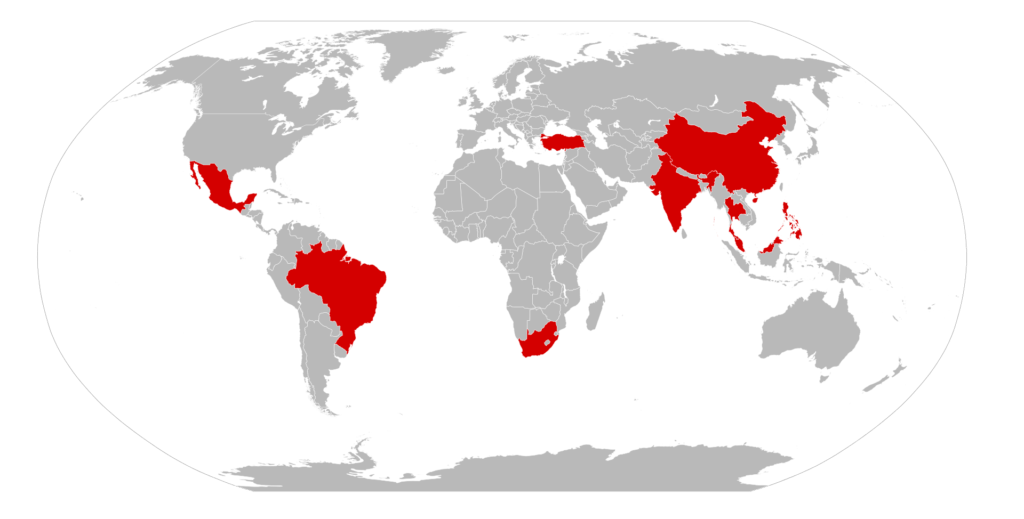Newly Industrialized Country (NIC)
A subcategory of countries that are still developing but show greater economic growth
What is a Newly Industrialized Country (NIC)?
The term newly industrialized country (NIC) refers to a subcategory of countries that are still developing but show greater economic growth compared to other developing countries. The NIC countries are continuously evolving and growing through industrialization and urbanization.

Summary
- The term newly industrialized country (NIC) refers to a subcategory of countries that are still developing but show greater economic growth compared to other developing countries.
- The NIC concept became widely recognized in the 1970s. During these years, Asian countries – also known as the “Four Asian Tigers” – Singapore, Hong Kong, South Korea, and Taiwan dominated in terms of economic prosperity and technological innovation.
- NICs typically aim to export their production to other developing countries. This ability is due to comparatively lower input costs such as labor costs.
Brief History and Background of NICs
The NIC concept became widely recognized in the 1970s. During the period, Asian countries – also known as the “Four Asian Tigers” – Singapore, Hong Kong, South Korea, and Taiwan, dominated in economic prosperity and technological innovation. The four countries showed great industrial growth since the 1960s and are now industrialized countries with high-income economies.
The “Asian Tigers” and countries that are now considered NICs show clear dissimilarities that can be attributed to a mixture of a high gross national income per capita, sound export-oriented economic policies, and transparent political processes.
Characteristics of NICs
NICs typically receive investment capital from foreign developed countries. The capital is attracted to the country’s comparatively lower labor costs, land, or other inputs. It is largely invested in establishing production facilities for speedy productivity growth and industrialization.
NICs tend to achieve a large sum of capital and investments. It is mainly financed from a high inclination to export machinery, consumables, and domestic savings. NICs typically experience speedy productivity growth and industrialization.
Governments of NICs tend to control their industrialization and encourage manufacturing industries to export their products. Profits generated through exports are normally reinvested into the domestic economy.
The practice brings great socio-economic benefits, including the growth of businesses and an increase in salaries and wages. The increment in salaries and wages encourages consumer spending, and the workforce can support local businesses for goods and services. It is known as the multiplier effect.
Contributors for Growth in NICs
Below are some of the contributors to the growth seen in NICs:
1. Government intervention
A majority of NIC economies are subject to the government’s intervention to encourage overall development or the development of specific industries through policy interventions. The policy interventions included subsidizing weak industries, maintaining ceilings on lending rates, making public investments, etc.
2. Circumstantial “head-starts”
Some countries enjoy a head-start advantage, such as a better-educated workforce.
3. Financial repression
By keeping interest rates low to lessen the cost of borrowing for companies, NICs subsidize corporations by letting savers earn interest rates lower than the inflation rate.
4. Population
Typically, population growth rates in NICs are declining, in comparison to other developing countries.
Countries that can be Categorized as NICs
The category of “newly industrialized country” is not completely agreed upon; thus, many on a list can easily be disputed. However, many experts deem the following countries as NICs: Thailand, Mexico, South Africa, Brazil, Singapore, Turkey, Taiwan, India, and Hong Kong.
Additional Resources
CFI offers the Capital Markets & Securities Analyst (CMSA®) certification program for those looking to take their careers to the next level. To keep learning and developing your knowledge base, please explore the additional relevant resources below: